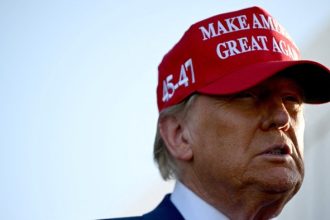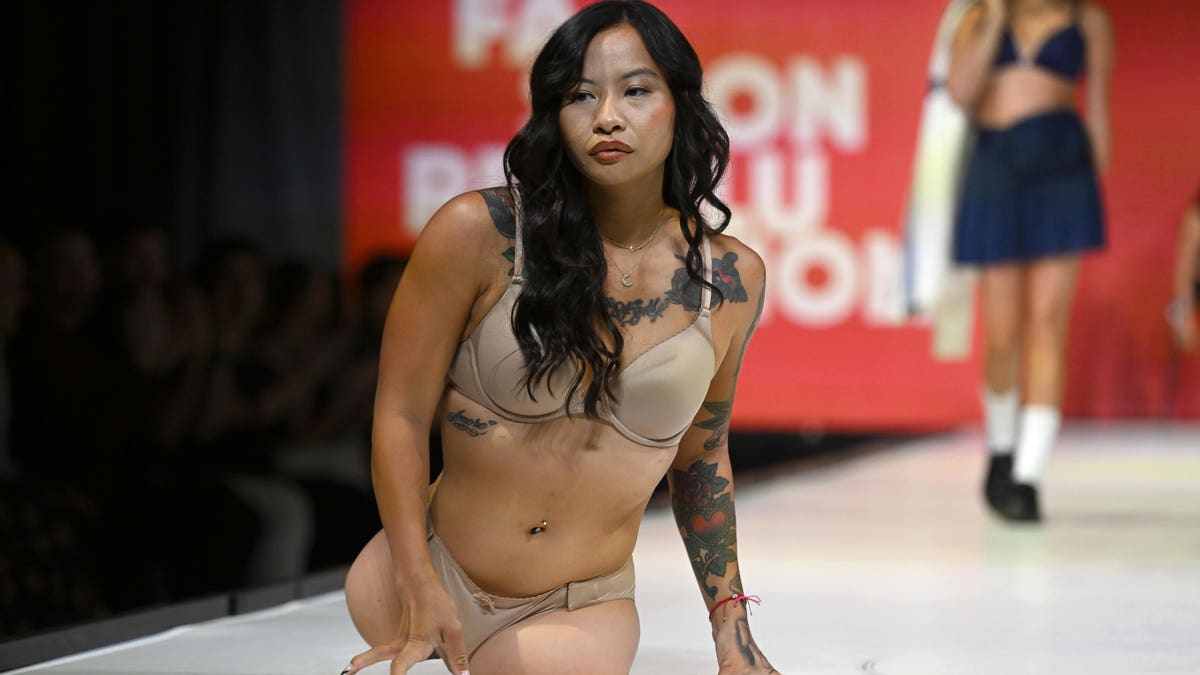“To be honest, I was disappointed with the lack of diversity from big name designers this year,” a fellow fashion reporter told me on the last day of New York Fashion Week (NYFW). Black designers made up approximately 15 percent of the week’s calendar and the stereotype of the thin, white model prevailed on many of the runways. But look beyond the top tier luxury brands and a very different, more hopeful, image of NYFW is emerging.
Non-profits collectives and international brands are pushing for a more diverse and inclusive NYFW, one that better represents the shoppers at the end of the fashion supply chain that ultimately fuel demand. To kick off NYFW, RAISEfashion—a non-profit that provides pro bono business consulting to BIPOC-owned brands—held a showcase of several Black designers at The Standard High Line Hotel. One such brand was Busayo, a clothing line named after Nigerian designer, Busayo Olupona. The former lawyer founded Busayo with the intention of bringing Nigeria’s rich textile traditions to the United States, using the Yoruba textile dying technique known as ‘adire’ to create bright, colorful pieces that enable women to express themselves.
Another designer that amplified the textile traditions and artisans of their home country at NYFW is Shreya Patel, the creative director and founder of RAAS. The South Asian clothing line—which held their runway show as part of South Asian New York Fashion Week—caters to the ‘Global Desi,’ which they describe as a “world citizen with Indian roots.” Traditional outfits meant for South Asian festivities such as Diwali, Navaratri and weddings, utilize ancient techniques to create colorful, embellished pieces. The ‘EZORA: The United Blend’ collection that featured on the runway celebrated the fusion of Western silhouettes with the artistic heritage of Gujarat, India through the use of bold colors and delicate embroidery.
Several Indian American celebrities demonstrated their support for the brand, including ‘Never Have I Ever’ star Richa Moorjani who walked the runway herself. “I’m so honored and happy to have worked with a brand like RAAS that truly aligns with my values, as somebody who cares so much about uplifting Indian craftsmanship,” Moorjani said in an official press statement. Moorjani was one of several models who had a body type more representative of the general population. With the average size of an American women ranging between 16 to 18, RAAS’ decision to showcase a diversity of body types made a statement that inclusivity doesn’t have to be sacrificed in the pursuit of fashion.
Another NYFW event that reflected the diversity of bodies represented by the American population was the Runway of Dreams show. The public charity—which aims to make beauty and fashion more inclusive for people with disabilities (a group that represents nearly 42 million Americans)—hosted an adaptive fashion show that featured brands such as Zappos, Tommy Hilfiger, Target and Steven Madden.
The show was empowering not only for the audience, but for the models too. “Opening for Zappos was a great opportunity and I’m so happy I had the chance to break barriers with all different beautiful people,” says Runway of Dreams model Lexie Badel. “My modeling career started prior to having a disability, so to be surrounded by top companies and people celebrating models with disabilities on the runway was pretty surreal for me.”
Dana Zumbo, Business Development Manager of Zappos Adaptive, echoed the importance of seeing people with disabilities on the runway in an official press statement, “Historically, fashion runways have been nothing if not exclusive places. Part of the importance of the Runway of Dreams Foundation is that it shatters this highly restrictive space and rebuilds it as a platform of empowerment for all.”
While Tommy Hilfiger was one of the first mainstream brands to create adaptive apparel, in the last couple years, several other big name brands have followed suit, such as Victoria’s Secret and PINK, both of which debuted at this year’s adaptive show. The innovative designs showcased on the runway were also on display at Runway of Dreams’ fashion exhibit, ‘It’s Time To Adapt,’ open to the public in Hudson Yards.
Being inclusive doesn’t have to mean going as far as catering the designs for a specific segment of the population, as household names like Target and Victoria’s Secret are doing for people with disabilities. It can be as simple as diversifying the models that walk the runway. At the Selkie fashion show presenting their SS24 collection, models of all sizes, abilities, races and genders were represented on the runway.
At the show for Sprayground, a streetwear and travel fashion brand that aims to push the boundaries of fashion, Black models dominated the runway. “I think being born in the Bronx gives one a unique perspective,” Sprayground founder David BenDavid, who is white, said over email, adding that the creative casting director Sandflower Dyson is Black and also from New York City. “I align myself with people who want to create a better world, we are committed to moving the brand forward with a focus on diversity and inclusion.”
Read the full article here





